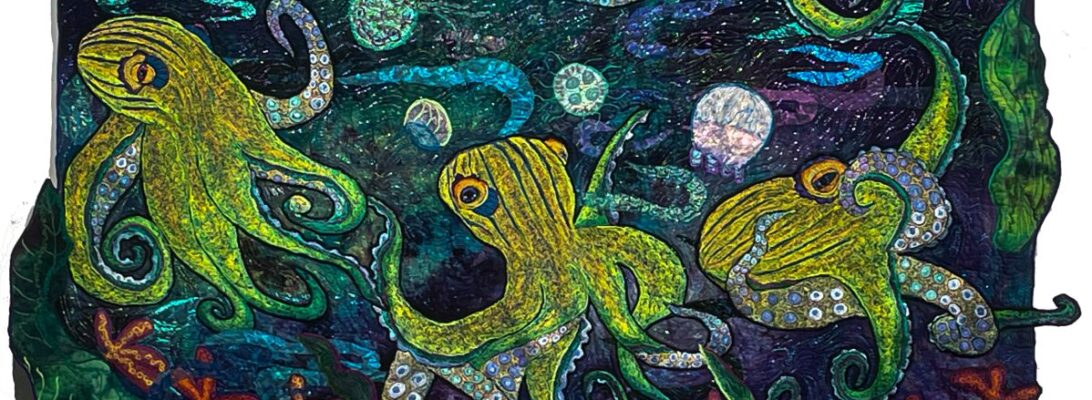
I’m always looking for a better way to do something. Easier. More visible. More user-friendly. Tech changes as we go along, partially because we get smarter about what we do, partially because we learn from others, and partially because the materials, thread, and stabilizers change and we change with them.
If change isn’t a four-letter word, it should be. It’s not easy or fun to develop new ways to do things. But if we are going forward on an artistic path, it’s inevitable.
Except when it’s not.

I developed using free-motion embroidered appliques as an anti-pucker technique. First I did it only with quite large objects. Over the last couple of years that has developed into what I call component quilting, where almost all of my images are done separately on a sandwich of hand-dye, felt and Stitch nTear, and then cut out. I apply them to the quilt surface only when they are completely embroidered.

What does that do technically?
- It diminishes the puckering around heavy embroidery by cutting it away
- It creates a strong visual image that pops off the quilt surface.
- It creates a larger outline than you might want for a smaller image.
- It allows you to use a zigzag stitch for quicker coloring.
What did I use to do? I stitched my images directly into the quilt sandwich. It was where I started as a quilter. First I used to stitch images into the quilting. Then I began to stitch with specialty thread so those images would show up better. It was at least 15 years before I began to stitch the images separately.
What does that do?
- It requires either straight stitch or very narrow zigzag because of the puckering
- It allowes the background to show throught the embroidery, so that it blends in more.
- It can be seen on the back (which is really cool if you embroider directly into the quilt sandwich
- It puckers up anyway, but less than it would with zigzag

I’ve pretty much stopped using direct image stitching. This time I went back to it strictly for the aesthetics. I wanted fish that did not stand out as much as the frog. Doing component embroidery on the frog and direct embroidery on the fish makes them different in appearance and creates a visual sort where your eye lets you know they are different. I wanted the frog half out of the water and the fish firmly in the water.The fish were outlined in a narrow black zigzag, and then stitched straight stitch from the back with metallic thread in the bobbin.


Did it work that way? I’m still figuring that out. The fish are quieter than the frog and seem part of the water. I’m not sure how I feel about the look.
I do know that I can’tafford to throw away technique. Some things just work differently. Having those options is holy.
Frog River is now available for sale at my Etsy Shop.




































